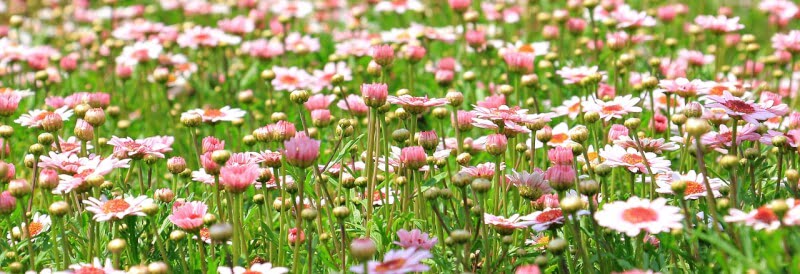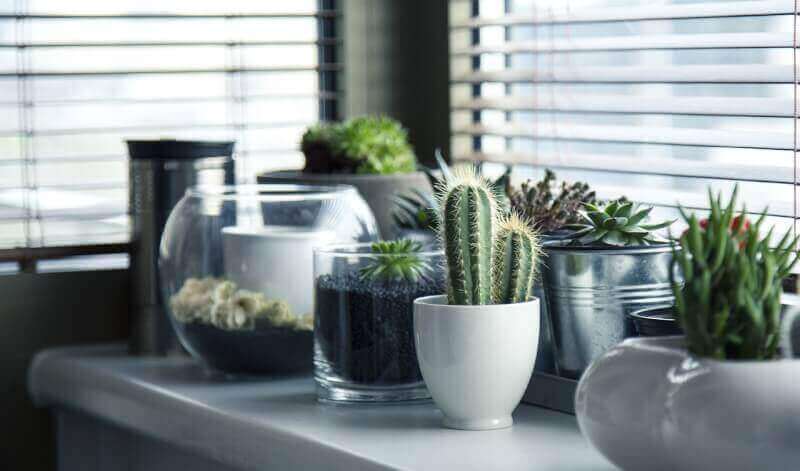👋 Click the mic button to talk to Alfred, the Todd's Seeds Gardening/Sprouting Expert – Feel free to ask him anything!
Ask Virtual Todd Anything - Click the Mic
If you’ve always dreamed of having a thriving garden, starting seeds indoors is a great way to get a head start on the growing season. Whether you have limited outdoor space or just want to enjoy the process of nurturing plants from the very beginning, this article will guide you on how to successfully start seeds indoors. From choosing the right containers to providing the ideal growing conditions, you’ll be equipped with all the tips and tricks to ensure your seeds sprout into healthy, vibrant plants. So, roll up your sleeves and get ready to embark on a rewarding journey of cultivating your own indoor garden.

Choosing the Right Seeds
Determining which seeds to start indoors
When it comes to starting seeds indoors, it’s important to choose the right varieties that will thrive in an indoor environment. Some crops, like tomatoes, peppers, and herbs, are well-suited for starting indoors because they have a longer growing season and benefit from the controlled conditions. On the other hand, crops that have a short growing season or don’t tolerate transplanting well may be better off sown directly outdoors. Take some time to research which plants are best suited for indoor cultivation based on your climate, available space, and personal preferences.
Considering temperature and light requirements of seeds
Each type of seed has specific temperature and light requirements for optimal germination. Some seeds require warmer temperatures to germinate, while others prefer cooler conditions. It’s important to read the seed packet or do some research to determine the ideal temperature range for germination. Additionally, light requirements can vary widely, with some seeds needing full sun and others preferring partial shade. Take note of these requirements to ensure your indoor setup can provide the necessary conditions for successful germination and growth.
Understanding seed viability
Before starting seeds indoors, it’s crucial to consider seed viability. Seeds that are old or have been improperly stored may have a lower germination rate and may not produce healthy seedlings. To test seed viability, you can perform a simple germination test. Place a few seeds on a damp paper towel, fold it over, and keep it in a warm place for a few days. Check the seeds to see how many have sprouted. This will give you an idea of the germination rate and help you decide whether to use a larger quantity of seeds or purchase fresh ones.
Gathering the Necessary Supplies
Selecting the appropriate containers
Choosing the right containers is essential for successful seed starting. Options include plastic trays, cell packs, peat pots, or even recycled containers like yogurt cups or egg cartons. The key is to select containers that have adequate drainage holes to prevent waterlogged soil. Additionally, consider the size of the container – smaller containers are suitable for smaller seeds while larger seeds may require more space. It’s also worth considering reusable containers to reduce waste and save money in the long run.
Choosing a suitable potting mix
A high-quality potting mix is fundamental for providing seeds with the necessary nutrients, moisture retention, and good drainage. Avoid using garden soil which can be too heavy and may contain pathogens or weeds. Look for potting mixes specifically formulated for seed starting or create your own by combining peat moss, vermiculite, and perlite. These components ensure a lightweight mix that retains moisture while providing adequate aeration for developing roots.
Acquiring seed trays or pots
To keep your seeds organized and provide them with proper growing conditions, you’ll need seed trays or pots. Seed trays are shallow containers with separate compartments, while pots are individually sized containers. When choosing seed trays or pots, consider their material – plastic is reusable, while biodegradable options like peat or coir pots can be planted directly into the ground when the seedlings are ready for transplanting.
Obtaining a heating mat or grow light
Seeds require consistent warmth and light for germination. If your indoor space doesn’t naturally provide these conditions, you may need to invest in additional equipment. A heating mat is a simple and effective tool that provides consistent bottom heat, which promotes faster germination. Alternatively, if you don’t have access to adequate natural light, a grow light can provide the necessary spectrum of light for seedlings to thrive. Look for lights specifically designed for seed starting, as they emit the ideal wavelengths for photosynthesis.
Preparing the Seeds for Planting
Providing a pre-sowing treatment, if necessary
Some seeds benefit from a pre-sowing treatment to help break their dormancy and encourage germination. This treatment can involve soaking seeds in water, chilling them in the refrigerator, or scarifying the seed coat. Check the seed packet or do some research to determine if your chosen seeds require any pre-sowing treatment. By providing this treatment, you can improve germination rates and overall success with your seeds.
Soaking seeds for improved germination
Soaking seeds before planting can help soften the seed coat, allowing for faster and more successful germination. Fill a container with room-temperature water and place the seeds inside. Allow them to soak for the recommended time, which can vary depending on the seed type. Be careful not to soak them for too long, as overly saturated seeds may become damaged. Once the soaking time is complete, carefully remove the seeds and proceed with planting as instructed.
Scarifying seeds with a file or sandpaper
Some seeds have hard outer coatings that inhibit germination. Scarifying involves gently abrading the seed coat to allow water and air to penetrate, promoting germination. To scarify seeds, lightly rub them with a file or sandpaper until you see a slight change in color or texture. Be cautious not to damage the seed embryo or scarify too deeply. After scarification, soak the seeds or proceed with planting them according to the instructions.
Creating an Indoor Seed-Starting Space
Identifying a warm and well-lit location
When setting up your indoor seed-starting space, choose a location that receives plenty of natural light and maintains a consistent temperature. South-facing windows are ideal for providing adequate sunlight, but if that’s not available, consider utilizing artificial lighting. Additionally, ensure the area is free from drafts or temperature fluctuations that could stress the seedlings.
Setting up shelves or tables for seed trays
To maximize space and organization, set up shelves or tables specifically for your seed trays. Adjustable shelves allow you to customize the spacing to accommodate the height of your seedlings as they grow. Make sure the shelves or tables are sturdy enough to support the weight of the trays, pots, and grow lights if necessary.
Ensuring proper ventilation and air circulation
Good ventilation and air circulation are essential for healthy seedlings. Stagnant air can lead to an increased risk of fungal diseases or weak growth. Consider using a small fan to create a gentle airflow or open windows occasionally to exchange fresh air. Be mindful of temperature fluctuations and avoid placing the seedlings near drafts or vents.

Sowing the Seeds in Containers
Filling seed trays or pots with moist potting mix
Before sowing the seeds, fill your containers with moist potting mix. Moisten the mix by adding water gradually, mixing it thoroughly until it reaches a consistency that holds together when squeezed without excessive water seepage. Fill the containers up to about a quarter inch from the top, leaving enough space for the seeds to be covered with additional potting mix.
Planting seeds at the ideal depth
Different seeds have different requirements for planting depth, so it’s important to refer to the seed packet for specific instructions. As a general rule, plant small seeds close to the surface, about 1/4 inch deep, while larger seeds can be planted deeper, around 1/2 to 1 inch. Ensure the seeds are evenly spaced and take care not to overcrowd the containers, as this can lead to competition for light, water, and nutrients.
Labeling containers for easy identification
To avoid confusion and mix-ups, it’s crucial to label your containers. Use waterproof markers or stick labels on each container, clearly indicating the plant variety and the date of sowing. This will help you keep track of the different plants, identify any issues or successes, and plan for transplanting or succession sowing.
Providing Optimal Growing Conditions
Maintaining the appropriate temperature and humidity
Temperature and humidity play significant roles in seed germination and growth. Most seeds require a consistent temperature between 65-75°F (18-24°C) for optimal germination. Use a thermometer to monitor the temperature in your indoor space and adjust as necessary. Additionally, maintaining a moderate humidity level of around 50-70% can help prevent drying out or excessive moisture. This can be achieved by using a humidifier or placing trays filled with water near the seed trays.
Ensuring sufficient light for seedlings
Light is essential for healthy seedling development. If you’re relying on natural light, place your seed trays near a south-facing window that receives full sun for at least six to eight hours a day. If natural light is limited, supplement with a grow light. Position the light a few inches above the seedlings and adjust the height as they grow to maintain a distance of about 2-4 inches. Keep the light on for approximately 14-16 hours a day to simulate daylight hours.
Watering carefully and avoiding overwatering
Proper watering is crucial to seedling health. When watering, aim for a gentle and even distribution, ensuring the potting mix is evenly moist but not waterlogged. To avoid overwatering, check the soil moisture regularly by lightly pressing your finger into the potting mix. If it feels dry, it’s time to water. Avoid using cold water, as this can shock the delicate seedlings. Instead, use room-temperature water or allow it to warm up to room temperature before watering.

Managing Seedlings’ Growth
Monitoring and adjusting temperature and humidity
As your seedlings grow, it’s important to continue monitoring and adjusting the temperature and humidity accordingly. Some seedlings may benefit from a slightly lower temperature once they have sprouted, as this can encourage stronger stem growth. Regularly check the humidity level, particularly during warmer months when indoor spaces tend to be drier. Adjusting the humidity can help prevent drying out and promote healthy growth.
Supporting seedlings with gentle air movement
Seedlings require gentle air movement to help strengthen their stems. A small fan can provide the necessary air circulation, helping the seedlings develop sturdy and resilient stems. Set the fan to a low speed and position it to create a gentle breeze that sways the seedlings slightly. Be cautious not to position the fan too close, as strong airflow can damage the delicate seedlings.
Rotating containers to prevent leaning
To encourage even growth and prevent seedlings from leaning toward the light, regularly rotate the containers. Seeds that continuously stretch toward the light source can become weak and leggy. By rotating the containers every few days, you’ll ensure that each side of the seedlings receives equal exposure to light, resulting in more robust and upright growth.
Transplanting Seedlings Outdoors
Hardening off seedlings gradually
Before transplanting your seedlings outdoors, it’s crucial to harden them off. Hardening off is the process of gradually acclimating the seedlings to the outdoor environment, preparing them for the transition from controlled indoor conditions to the unpredictable outdoors. Start by placing the seedlings outside for short periods, gradually increasing the time over the course of a week or two. Begin with sheltered locations and avoid exposing them to extreme weather conditions initially.
Choosing the right time and weather for transplanting
Timing is key when it comes to transplanting seedlings outdoors. Wait until the threat of frost has passed and the soil has warmed up sufficiently for the specific plant you’re growing. Check the recommended transplanting times for each crop, as some may prefer early spring, while others thrive in late spring or early summer. Additionally, choose a calm, overcast day or transplant in the evening to minimize stress on the seedlings.
Preparing the soil in the outdoor planting site
Before transplanting, it’s important to prepare the outdoor planting site. Start by clearing any weeds, rocks, or debris from the area. Loosen the soil with a garden fork or tiller to improve drainage and root penetration. Incorporate organic matter, such as compost or well-rotted manure, to enrich the soil and provide essential nutrients for the seedlings. Smooth the soil’s surface to create a level planting bed, ready to receive the transplants.

Caring for Transplanted Seedlings
Watering newly transplanted seedlings
After transplanting, water the seedlings thoroughly to help them establish their root systems in the new location. Provide enough water to moisten the soil to the depth of the seedling’s root ball. Avoid excessive watering, as this can lead to waterlogging and root rot. Check the moisture level regularly and adjust the watering frequency based on weather conditions – seedlings may require more water during hot, dry periods.
Protecting transplants from extreme weather
Newly transplanted seedlings are more vulnerable to extreme weather conditions. If frost or unseasonably cold weather is forecasted, protect the transplants with row covers, plant tents, or even inverted buckets or pots. These temporary coverings can provide insulation and safeguard the delicate seedlings until the weather improves.
Mulching to retain moisture and suppress weeds
Mulching around the transplanted seedlings offers numerous benefits. Mulch helps retain moisture in the soil, reducing the need for frequent watering and creating a more stable environment for the roots. It also suppresses weed growth, conserves soil temperature, and prevents soil erosion. Choose organic materials, such as straw, wood chips, or shredded leaves, and apply a layer around the base of the seedlings, taking care not to cover the stems.
Expanding Your Indoor Garden
Succession sowing for a continuous supply of plants
To ensure a continuous supply of fresh produce or beautiful flowers, consider succession sowing. Succession sowing involves planting a new batch of seeds every few weeks throughout the growing season. This staggered approach allows you to harvest crops at different stages, preventing a glut of produce all at once. By sowing new seeds indoors and transplanting them outdoors at regular intervals, you can enjoy a constant harvest throughout the season.
Planning for transplanting and outdoor space
As your indoor seedlings grow, it’s essential to plan for their eventual transplanting into the outdoor garden. Consider the specific space requirements for each plant and ensure you have appropriate outdoor planting areas available. Take into account factors like sunlight exposure, soil quality, and any companion planting preferences. By having a clear plan in place, you can seamlessly transition your indoor-grown seedlings into the outdoor garden without any delays or complications.
Learning from each growing season
Every growing season presents an opportunity to learn and improve your indoor gardening skills. Take note of what worked well and what challenges you faced along the way. Keep a gardening journal to record observations, milestones, and successes. By reflecting on your experiences and continuously learning, you’ll be able to refine your techniques, make adjustments, and ultimately achieve even greater success in future growing seasons.
Starting seeds indoors is an exciting and rewarding way to kickstart your gardening adventures. By choosing the right seeds, gathering the necessary supplies, providing optimal growing conditions, and taking care of your seedlings, you’ll be well on your way to a successful indoor garden. Remember to transition your seedlings outdoors gradually and continue caring for them in the outdoor garden. With each growing season, you’ll gain valuable knowledge and experience to expand your indoor gardening endeavors even further. Happy growing!
